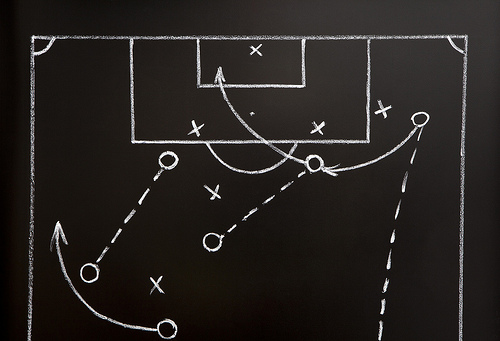Touches before tactics
Many youth soccer associations, including LYSA, play smaller-sided games at ages 8 and under with one specific goal in mind: Touches, touches, touches.
While it might seem a bit jarring that these organizations aren’t emphasizing positioning and tactics at the early ages, the truth is the potential for developing skills at these ages is far greater than their ability to grasp tactics.
They are sponges for foot skills and coordination activities. And the earlier they learn them, the more skilled and coordinated they will be when they get older.
Why skills matter more
Let’s assume you are a defender and you have dispossessed an opponent in your defensive third.
You look up and you see your forward making a diagonal run behind the last defender. You want to play a long ball and catch the defense while they are trying to get organized. The equivalent of a fast break in basketball. This is a tactical decision.
However, in order for this to happen, you must have the technical skill to make an accurate, flighted ball, with the right pace so it does not get intercepted.
It also means your forward must have the skill to bring such a ball out of the air and control it.
If either of the two does not have the skills to do their part, the play breaks down and your team loses the ball.
Tactics do not exist without skill!
The Art of Soccer Academy philosophy – Developing the skills of the game
Developing the five tools: Passing, receiving, dribbling, shooting and heading. These skills are the “tools” of the game. It is important to learn them early, correctly and well. Mastering these skills and being able to execute them with both feet will boost players’ confidence and help them reach their full potential.
Perfecting the “first touch”: Nothing indicates players’ technical skill level more than the quality of their first touch on the ball. The most important touch is the first touch. It determines if the player will control the ball and maintain possession, or lose it.
Playing for the pass: During the course of the game, a player will pass or receive the ball more than 80 percent of the time. 80 percent! So, if you want to be a good soccer player, you must be able to pass and receive with both feet without thinking about it.









